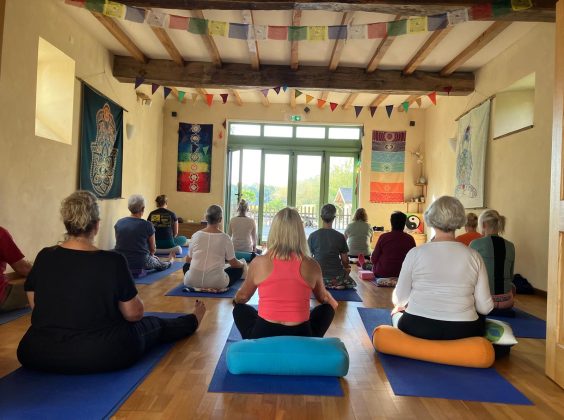
Share article:
Tags:
When I support clients with complex & messy problems, one of the things I look for is psychological safety. Because without it, people won’t feel safe to name what is happening.
Much has been written about the nation’s mood and an overall dip in psychological safety during the pandemic. In a NY times article, Adam Grant describes the joyless, aimless state of ‘languishing’ which he predicts will be the dominant mood of 2021. He describes languishing as more common than depression and a bigger risk factor for mental illness.
My clients feel the weight of responsibility for employee wellbeing when they are already feeling stretched themselves. They feel nervous about how the conversation about “hybrid working” leads into talking about previously “off limits” topics (e.g. health conditions, childcare, time to walk the dog) and feel woefully ill-equipped if they hear or see signs of mental ill heath.
So I am offering some ideas about how we can expand psychological safety for ourselves and our teams.
What do your meetings say about your team?
If I attended one of your team meetings, what would I see?
I ask this because meetings are a wonderful insight into your team.

In truth, for most people, the team meeting might look something like this: some general chit-chat as people log on, some cursory “how are you?,” answered in quick succession with socially acceptable answers (e.g. fine, good, OK) and then diving into the meeting agenda and getting down to business.
Probably unconsciously on your part, this signals to your team that your primary interest is in work, not the people doing it. Your team will pick up on this clue, and respond accordingly, by sticking to “work” based topics, and not bothering you with any fears or concerns they might have.
Curiously, in Google’s research into the secret sauce of effective teams, they found that psychological safety was the most important element and defined this as “team members feel safe to take risks and be vulnerable in front of each other.” This research was done pre-pandemic, so it’s interesting to note that they also discovered that colocation (i.e. sitting together in an office) was not a variable significantly connected to team effectiveness.
Amy Edmondson coined the term ‘Psychological Safety’ and invites us to do three things to foster psychological safety; frame work as a learning problem, not an execution problem, acknowledge your own fallibility, and model curiosity by asking lots of questions.
To my mind, if you consciously build psychological safety, you can get the triple whammy of improving team effectiveness, enabling wellbeing conversations, and also preparing for the conversations ahead about hybrid working and what it means (i.e.who knows – and we are having to make it up together!).
Building Psychological Safety
We know that feelings are data and so building psychological safety means tuning into these feelings. Without psychological safety our fight or flight response kicks in, closing down our reasoning, our perspective and reduces our creativity and willingness to collaborate with others.
Neuroscientist Lisa Feldman Barrett argues that one of the best strategies for managing emotions is to name them. She has found that people who have a higher emotional granularity go to the doctor less frequently, use less medicines and spend less time in hospital when ill. She explains that if you only have two emotion concepts, “great” or “crappy” then you are recategorising with a very broad brush stroke. By extending this to distinguish a richness of meanings, your brain creates more options for predicting, categorising and perceiving and helps you create more tools for responding. Imagine 50 shades of “crappy” (nice visual!)
We know that moods are a combination of feelings and emotions. As we go through our day, moods are more overarching and stay with us so we can spot them and change them. Emotions tend to be fleeting and pass, so we can miss them. When you ask someone to describe their mood, they often start with, “I think” and immediately you know they are trying to think their mood (i.e. from their head, their logic) rather than feel it. We feel in our bodies, not in our heads, but that requires us to tune in below our heads, it requires us to pause and feel.
As a manager, your ability to feel your own mood, and to genuinely express it, will lead the way for your team to do the same. I have previously blogged about the power of paying attention to your own mood. By sharing a negative mood (i.e. overwhelmed, distracted), you are acknowledging your own fallibility, and making it possible for them to do the same: building psychological safety. If your reaction is constantly, “everything is fine” then you discourage them from opening up.
Many managers operate from an assumption that they need to fix problems, and be the “grown up” and I have written about the dangers of this before. This means you see work as “execution” rather than learning, and misinterpret the cathartic power of being heard, which can be like releasing steam from a pressure cooker. Let go of this.
A Meeting Hack
I have facilitated multiple learning events, where managers hungrily ask, “what’s the latest way to engage your team?” They are looking for the latest fad for how it’s done so they can try something different. However, the unintended consequence of this is that your team arrives to every meeting unsure what is going to happen next, as well as apprehensive. In fact the opposite of what is needed to build psychological safety; a rhythm, a ritual that invites deeper sharing, that provides certainty so people know what will happen (and hence they feel safe). It also helps you start to tune into each other and also to notice anything unusual.
To do this, I encourage clients to build a ‘mood check’ ritual into the team meetings they are already having. To deliberately start with this ritual at the start of every team meeting, to expand psychological safety. If you want to build this into your meetings, here is how to start:
- Pause and breathe and invite the team to do the same (resist the temptation to rush this). 30 seconds might feel like an hour to begin with, but it will get easier.
- Invite everyone in the group to tune into themselves and notice how they are arriving. Invite them not to think how they are but to truly tune into their bodies to feel their mood.
- Including yourself, go around the team, and ask each person, “what’s your mood, how are you arriving?”
- Encourage everyone to avoid long justifications and simply describe their mood, their sensations. They may choose to say why, but that isn’t necessary.
- Role model listening well and look out for platitudes or subtle put-downs. If people want to respond, invite them to show curiosity by asking questions.
- Thank each person after they have reported their mood, and invite the next person to go.
- If someone does share something worrying, ask them, “what do you need?” and resist the temptation to tell them what to do.
So what?
I am hoping you found this blog useful and I would invite you to reflect on the themes and ideas raised. The following questions might help you with this:
- What has this blog sparked in you?
- How can you expand psychological safety in your team?
- How would you introduce the idea of a mood check?





